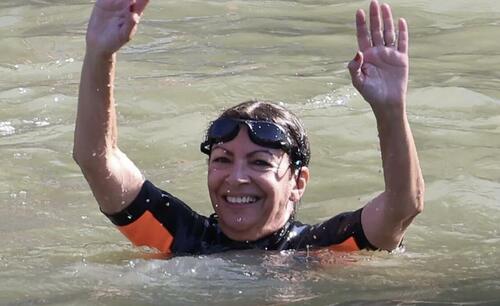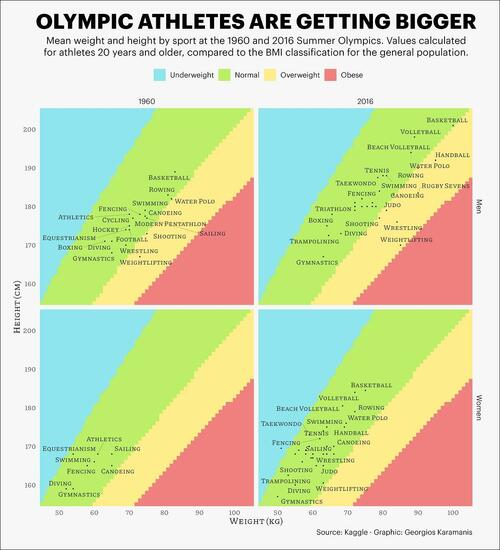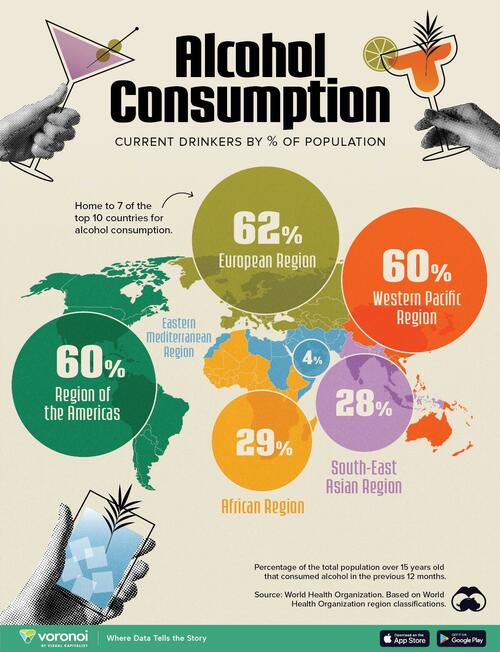CDC: Measles Cases In US So Far This Year Already Triple 2023 Total
Authored by Jack Phillips via The Epoch Times,
Federal health officials reported that the number of measles cases so far in 2024 has already tripled the total for all of 2023.
According to data published by the U.S. Centers for Disease Control and Prevention (CDC) on July 26, at least 188 cases of measles have been reported across the United States for 2024. In all, 26 states and Washington, D.C., have reported cases of the virus, which officials say can cause severe disease in children.
In 2023, a total of 58 measles cases were reported across the United States, the CDC data shows.
During 2024, there have been 13 outbreaks so far, which the CDC defines as three or more related cases, and about 65 percent of cases are related to outbreaks, according to the agency. Children under the age of 5 account for nearly half of the cases in 2024.
Cases this year have been reported in Arizona, California, District of Columbia, Florida, Georgia, Illinois, Indiana, Louisiana, Maryland, Massachusetts, Michigan, Minnesota, Missouri, New Hampshire, New Jersey, New Mexico, New York City, New York State, Ohio, Oregon, Pennsylvania, South Dakota, Vermont, Virginia, Washington, West Virginia, and Wisconsin, the agency said.
No deaths from the virus have been reported so far in 2024, according to the CDC, but 93 patients have been hospitalized.
Local health authorities have issued multiple alerts this year due to infected individuals with a recent history of international travel, potentially exposing other people to measles in airports, including an incident in late May at the Philadelphia International Airport. In early July, public health departments in Washington state and Ohio issued similar warnings.
“Measles is a very contagious infection and if you don’t yet have immunity, you can get it just by being in a room where a person with measles has been,” Eric Chow, an official in the King County Public Health agency, said in a release.
In March, the CDC sent out a health alert regarding an increase in “global and U.S. measles cases,” saying that people traveling internationally should take caution before leaving the country.
But despite the recent increase, the numbers are far below those reported in 2019, when about 1,300 cases were reported across the U.S.
Worldwide, measles cases increased 18 percent and deaths rose 43 percent between 2021 and 2022, according to a report issued by the U.N. World Health Organization (WHO) and the CDC in late 2023.
Migrant Shelter Outbreak
A significant number of measles cases reported in the United States this year have been connected to the spread of the virus at a Chicago shelter that houses illegal immigrants. As of May, 57 cases were associated with the shelter outbreak, the CDC said in a report.
“Most cases occurred in unvaccinated persons. A prompt and coordinated response with a high-coverage mass vaccination campaign reduced the size and duration of the outbreak,” the agency stated, referring to the Chicago outbreak.
The CDC added that the setting allowed measles to spread quickly to the 2,100 potentially “exposed shelter residents” starting in early March.
Symptoms
Authorities say measles, a highly infectious virus, generally shows up in two stages. In the first, most people develop a fever higher than 101 degrees Fahrenheit, runny nose, watery red eyes, or cough. These symptoms generally start seven to 14 days after exposure.
Officials say the second stage of measles starts two to three days after the initial symptoms. Some people develop what is known as Koplik spots—tiny white spots—inside the mouth, the CDC says.
Three to five days after the first symptoms begin, the telltale measles rash starts to appear on the patient’s face near the hairline area before it spreads to the rest of the body.
“Small raised bumps may also appear on top of the flat red spots,” and the “spots may become joined together as they spread from the head to the rest of the body,” the CDC says on its website. “When the rash appears, a person’s fever may spike to more than 104 degrees Fahrenheit.”
Tyler Durden
Mon, 07/29/2024 – 07:20
via ZeroHedge News https://ift.tt/XHWl8Cm Tyler Durden










